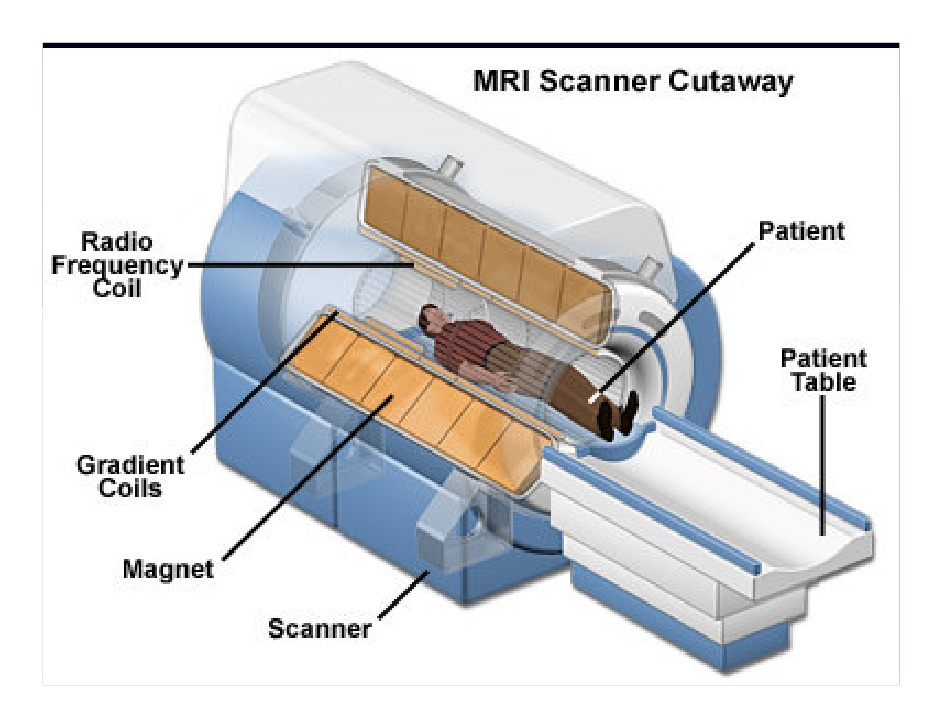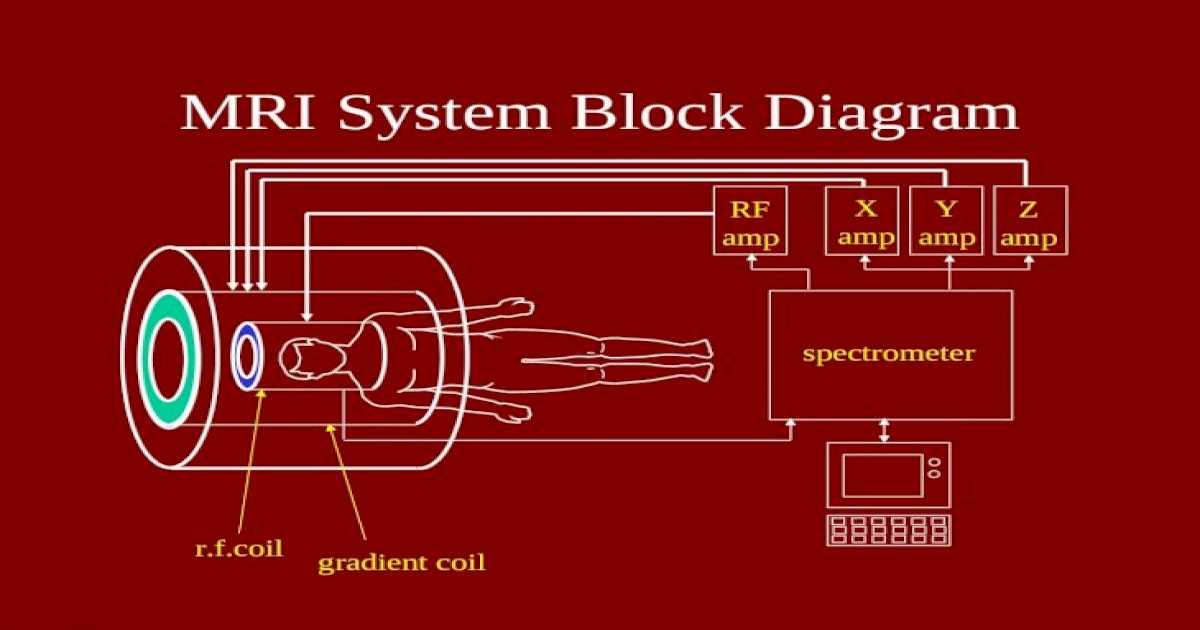
How Resonance Imaging (MRI) Works Electrical and Electronics
Current diagnostic MRI scanners use cryogenic superconducting magnets in the range of 0.5 Tesla (T) to 1.5 T. By comparison, the Earth's magnetic field is 0.5 Gauss (G), which is equivalent to 0.00005 T. Cooling the magnet to a temperature close to absolute zero (0 K) allows such huge currents to be conducted; this is most commonly performed via immersion in liquid helium.

Schematic of the MRI system (Adapted from [18]) Download Scientific
Slide 1 of 39. Slide 1 of 39
The block diagram of the spectralscanning MRI (SSMRI) system and SSMRI
Lucidchart's block diagram software is quick & easy to use. Get the most powerful, professional diagram software on the market.

Block diagram of MRI compatible masterslave prostate biopsy
Magnetic resonance imaging can produce highly sophisticated and highly detailed images of the human body. Generally speaking, MRI scanning is excellent for visualising soft tissue - and so it is often used in the detection of tumours, strokes and bleeds.

Block diagram of MRI compatible masterslave prostate biopsy
Magnetic Resonance Imaging (MRI) is a non-invasive imaging technology that produces three dimensional detailed anatomical images. It is often used for disease detection, diagnosis, and treatment monitoring. It is based on sophisticated technology that excites and detects the change in the direction of the rotational axis of protons found in the water that makes up living tissues.

Block diagram for an ISS Compact MRI system. Download Scientific Diagram
View the TI MRI block diagram, product recommendations, reference designs and start designing.

resonance imaging (MRI), Part 1 How it works
Medical application - Magnetic Resonance Imaging (MRI) block diagram Posted on May 19, 2014 by Electronic Products Magnetic Resonance Imaging (MRI) helps us visualize the structures of the body that include water and fat molecules.

Mri system block diagram
Magnetic resonance imaging (MRI) is a powerful diagnostic tool that can be optimized to display a wide range of clinical conditions. An MRI system consists of four major components: a main.

6. Block diagram of a typical resonance imaging scanner
The block diagram of a typical MRI system with the components, pulse. | Download Scientific Diagram Figure 2 - uploaded by Richard Magin Content may be subject to copyright. The block.

PPT My spin on MRI The basics of MRI physics and image formation
Slide 2 of 49. Slide 2 of 49

Schematic block diagram of the lowfield MRI system. Download
Book Your Own Private Mri Scan Online Within Minutes With Our Easy To Use Booking Process. Instantly Refer Yourself For A Private Mri Scan Today Using Our Online Booking System.

What is MRI Vector
Mri system block diagram 1 of 21 Download Now Save slide Save slide Recommended IMAGE RECONSTRUCTION IN MRI (7th chapter) Joshua Mathew 2.1K views • 10 slides Computed Tomography and Spiral Computed Tomography JAMES JACKY 5K views • 45 slides Mri gradient coils Shahnawaz Khan 6.2K views • 36 slides

A schematic diagram of functional MRI scanning. MRI, resonance
Slide 27 of 57. Slide 27 of 57

MRI system components and their relationship. a, b Block diagram (a
The block diagram in Fig.I-1 shows typical interaction pathways between the major sections of an MR imaging system (3). At the present time a wide range of magnetic field strengths is available. Table l-2 shows some typical magnetic field strengths available commercially, ranging from 0.02 Tesla to around 15 Tesla.

260 mri system block diagram [PPT Powerpoint]
Between the two, the key differences you need to be aware of are: T1 - ONE tissue is bright: fat. T2 - TWO tissues are bright: fat and water ( WW2 - W ater is W hite in T 2) T1 is the most 'anatomical' image (Figure 1). Conversely, the cerebrospinal fluid (CSF) is bright in T2 due to its' water content. T2 is generally the more.

Image
2.6 Imaging Hardware. An MRI scanner is made up of four components: the magnet, gradient coils, r.f. transmitter and receiver, and the computer. In this section the general design and construction of these components is discussed. More specific details of the system used for the experiments in this thesis are given in the relevant chapters.